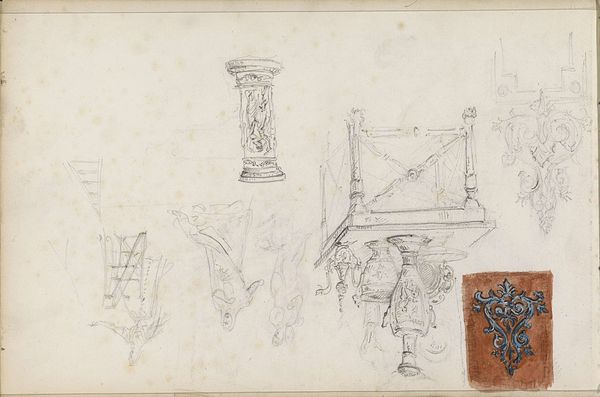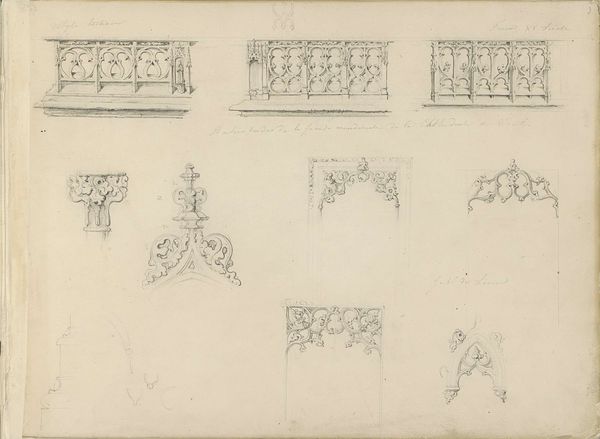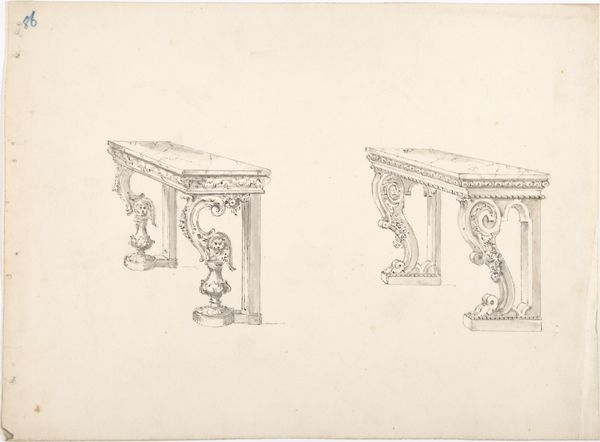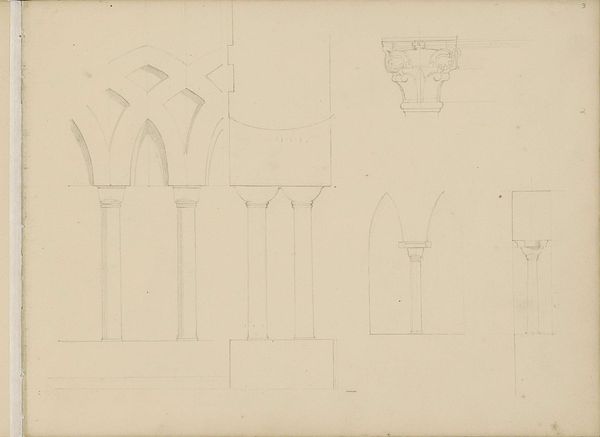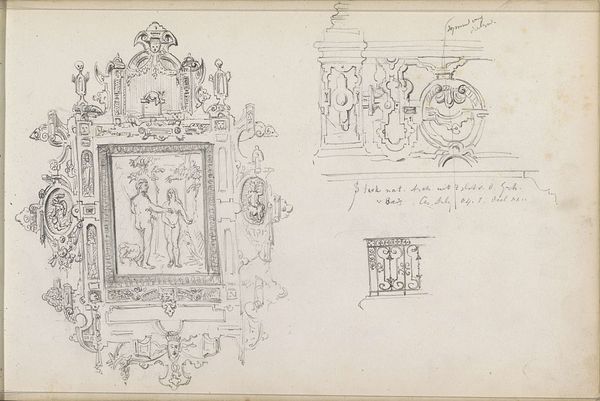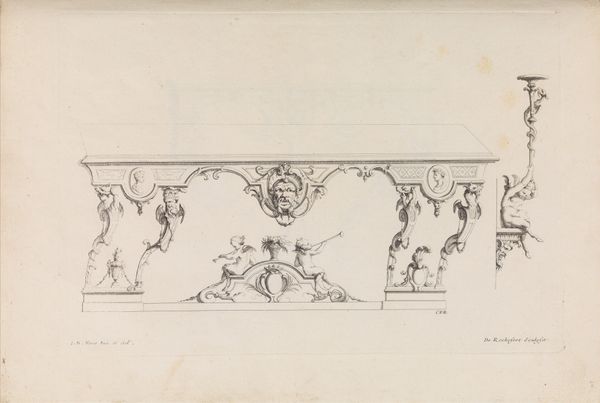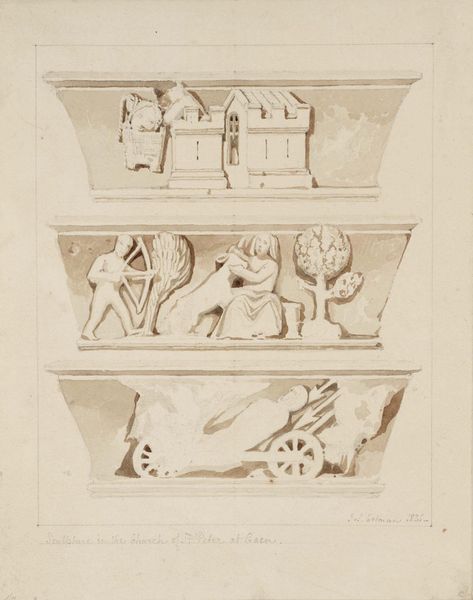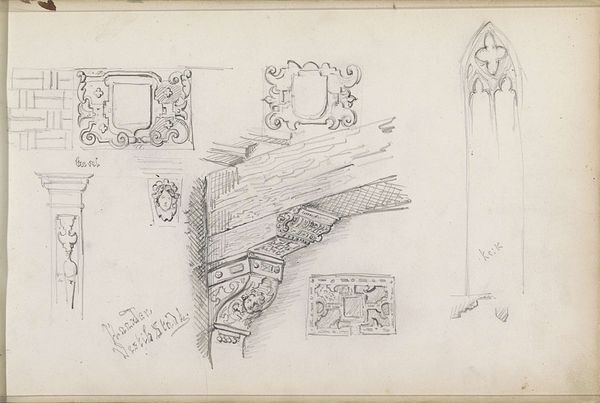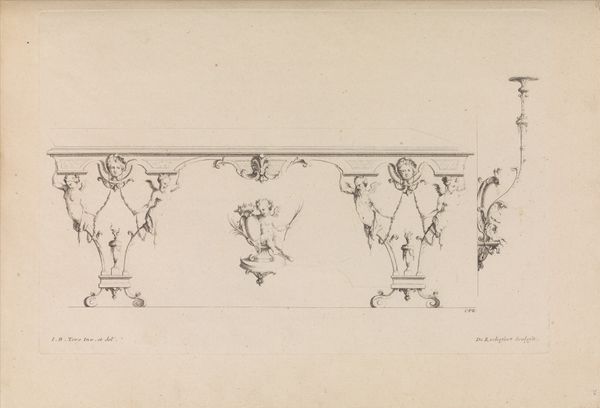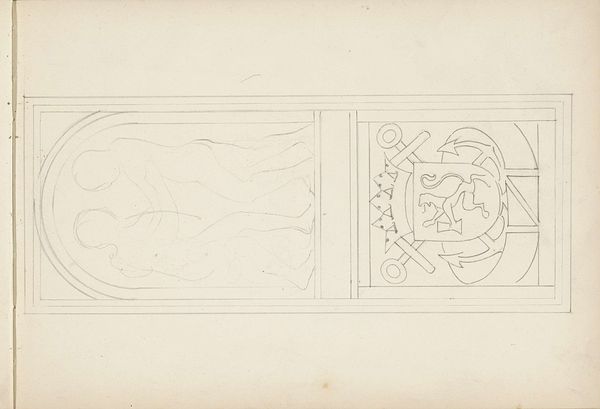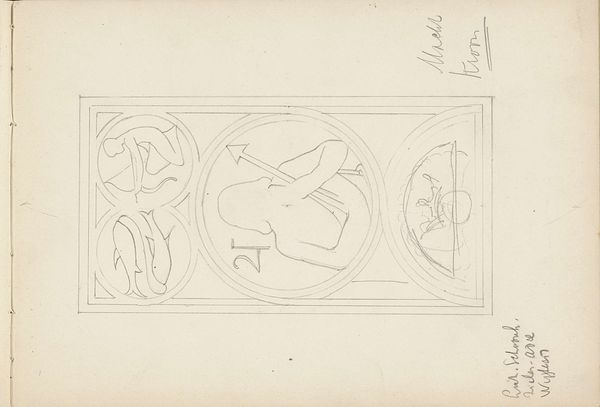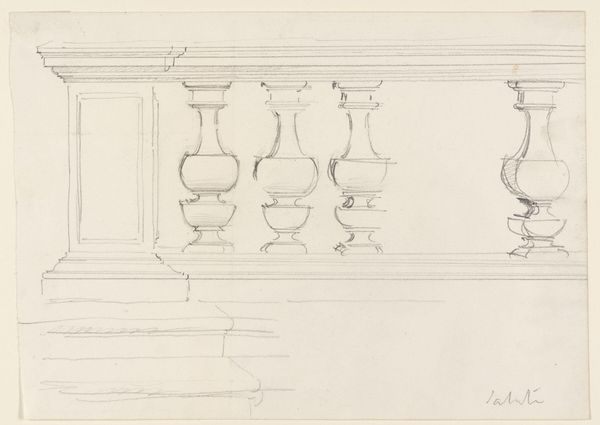
Piëdestals en standaarden voor missalen, Schiedam 1857 - 1859
0:00
0:00
drawing, paper, pencil, architecture
#
drawing
#
paper
#
geometric
#
pencil
#
architecture
Copyright: Rijks Museum: Open Domain
Curator: Here we have a pencil drawing by Pierre Cuypers, created between 1857 and 1859. It depicts various designs for pedestals and stands intended for missals in Schiedam. The drawing is executed on paper and currently resides here at the Rijksmuseum. Editor: The draftsmanship has an appealing clarity, a tentative feeling as if he is sketching different possibilities. The foliate carvings are striking—what story do they tell? Curator: The resurgence of the Gothic style during the 19th century was strongly tied to the political and religious climate. After a period dominated by neoclassical ideals, Cuypers, along with others, advocated for a return to the artistic styles associated with the perceived purity and piety of the medieval era. The Church played a pivotal role as patron and advocate for Cuypers and the Gothic Revival movement. Editor: Absolutely. And this design uses instantly recognisable religious symbology. We see the vine – evoking the eucharist, Christ’s blood; or the oak leaves. Do you think this emphasis on specific flora ties into a wider cultural association with specific moral and spiritual meanings? Curator: Certainly. This harkening back to older forms served as a visual assertion of traditional religious values amidst a rapidly changing social landscape. Cuypers, in effect, used architectural design as a means of ideological and religious expression, with the Catholic Church remaining an enduring and potent source of patronage. Editor: It gives me the distinct impression of spiritual authority being literally 'set in stone'. These are assertive structures, designed to instill both awe and a connection with the divine. The very physicality of the design conveys its importance in both the liturgical practice and its ability to cement institutional prestige. Curator: Precisely. Viewing this drawing provides invaluable insights into how architecture, specifically ecclesiastical design, played a crucial part in shaping religious identity. Editor: Indeed. It also illuminates how Cuypers navigated complex political dynamics through artistic practice. Thank you!
Comments
No comments
Be the first to comment and join the conversation on the ultimate creative platform.
